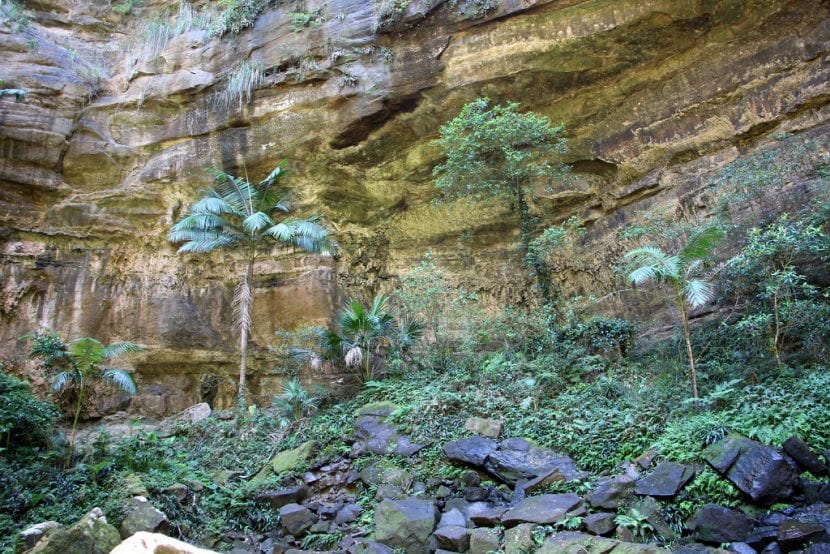
La Archontophoenix cunninghamiana it is one of those few lucky palm trees that has quickly become popular in the warm-temperate regions of Europe. Its rapid growth and its slim and slender trunk make it an ideal plant to grow in small to large gardens and even in large pots.
Although it is not as resistant to the sun as its sister Archontophoenix Alexandrae., has an incalculable ornamental value. Do we know it?
Origin and characteristics
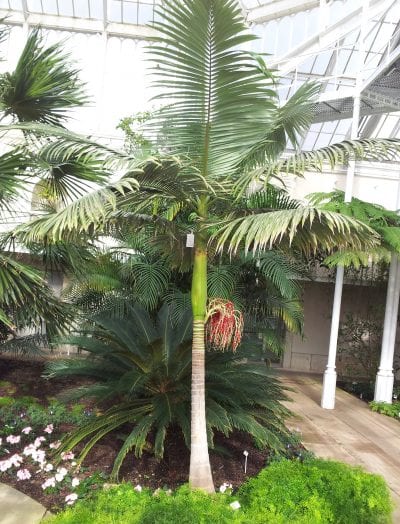
Our protagonist is a unicaule palm tree -of a single trunk- native to Australia, whose scientific name is Archontophoenix cunninghamiana. It is popularly known as the Cunningham palm, seafortia, bangalow palm or King Palm. Grows quickly to a height of 20-25 meters. Its leaves are pinnate, up to 4 meters long, normally green in color, but may turn out reddish.
The flowers are grouped in inflorescences that arise from the stipe, and are purple in color. The fruits are red, measure about 1 centimeter, and have an oval shape.
What are their cares?
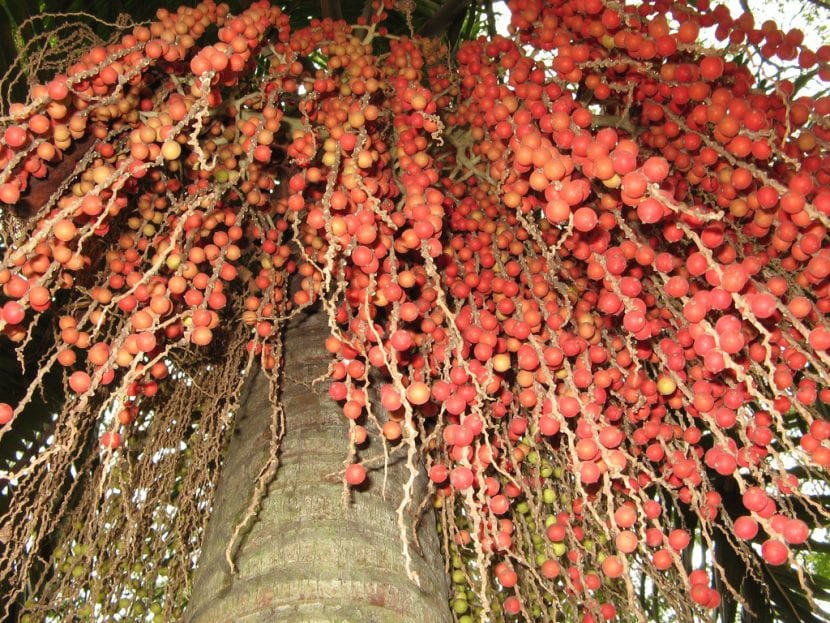
If you want to have a copy, we recommend that you provide it with the following care:
Location
- Body exterior:: grows best in semi-shade. In full sun it burns easily and has trouble adjusting.
- Interior- You can be in a bright room, away from drafts.
Earth
- Garden: it is indifferent as long as it is fertile and has good drainage.
- Flower pot: universal culture substrate mixed with 30% perlite.
Irrigation
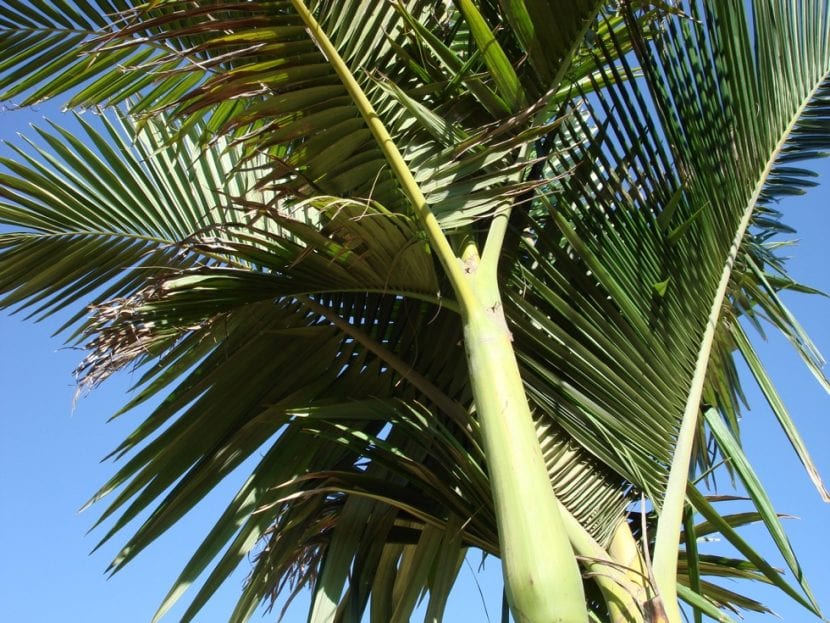
Image - www.jardinbotanico.uma.es
The frequency of irrigation will depend a lot on the location, as well as the weather. So, The ideal is to check the humidity of the soil before proceeding to water it to avoid problems. For that we can do the following:
- Introduce a thin wooden stick: we can get it in any Chinese or Japanese restaurant or shop. If when you extract it, it comes out with a lot of soil attached, we will not water since the soil will still be very wet.
- Use a digital humidity meter: as soon as we introduce it, it will tell us what degree of humidity has that portion of earth that has come into contact with it, but for it to be really useful it is important that we introduce it in other areas (closer to the plant , further away).
- Weigh the pot once it is watered and again after a few days: wet soil weighs more than dry soil, so this difference in weight can serve as a guide to know when to water.
Anyway, to have more or less an idea, I water 4-5 times a week in summer and about twice a week the rest, living in an area with a dry Mediterranean climate (maximum annual temperature of 38ºC and minimum of -1 '5ºC, and with about 350mm of precipitation per year).
During the warmer months, if you have it in a pot you can put a plate under it.
Subscriber
From early spring to late summer (It can also be in autumn if you live in an area with a mild or warm climate) it must be fertilized so that it can grow well. For this I advise using Organic fertilizersas guano, earthworm humus, bone meal ...
The chemical fertilizer for palm trees is fine, but incomplete, so we can use it in combination with others that are organic, one month yes and another not. You should never mix them since if you did, the leaves would see that they would not resist it.
Multiplication
La Archontophoenix cunninghamiana multiplies only by seeds in spring or summer. The way to proceed is as follows:
- The first thing we will do is put them in a glass of water for 24 hours. The next day, we will discard those that have been floating as they will probably not germinate.
- Then, we prepare a pot with a universal cultivation substrate mixed with 30% perlite and water thoroughly.
- Next, we place the seeds on the surface, placing them at a distance of 2-3 centimeters between them. It is also important not to put too many in the same container, since doing it later, when putting them in individual pots, we could lose more than one. So that this does not happen, you have to put 2 or 3 in a 10,5cm pot.
- The next step is to cover them with a layer of substrate, mostly so that they are not directly exposed to the sun.
- Finally, we water again, this time with a sprayer, and place the pot outside, in semi-shade.
Keeping the substrate moistened, the seeds will germinate in 2 months maximum.
Plagues and diseases
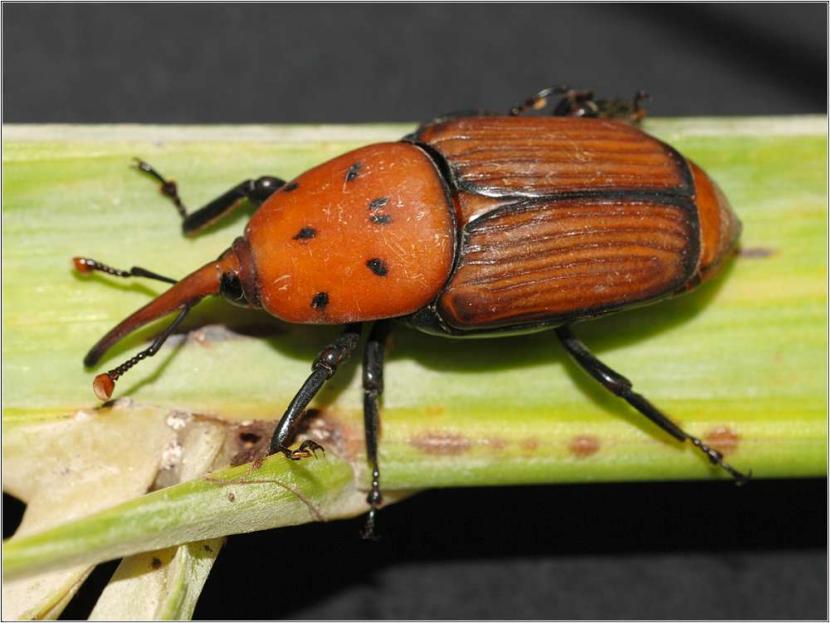
It is a very resistant palm tree, but it can be attacked by:
- Mealybugs: they can be cottony or limpet-like. They are sap-sucking parasites that we will find in the most tender leaves. We can remove them by hand, with a brush soaked in pharmacy alcohol or with an anti-cochineal insecticide.
- Red palm weevil and Paysandisia: these are two pests that are causing havoc. The first is a weevil (a species of beetle but thinner) whose larvae excavate galleries in the palm tree's bud, and the second is a moth whose larvae burrows gallery in the trunk and makes fan-shaped holes in the leaves. It is necessary to do preventive treatments in spring and summer with imidacloprid, and with these remedies.
Pruning
Don't need it. If a case is necessary to remove the dry leaves in autumn.
Rusticity
La Archontophoenix cunninghamiana resists well up to -4ºC.
What did you think of this palm tree? Did you know her?